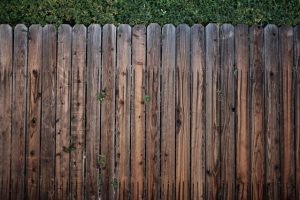
While we are excitedly in the process of installing a new wooden fence, we don’t pay much attention to some details. Many of us even prefer aesthetics above other requirements for a fence that goes around our yard. Installation alone is a very big reason behind wooden fences weathering out too soon!
However, if you do not do your homework about the material of the fence and its maintenance, you would be getting a wooden fence repair very soon. Same goes for people who rented a home with a fence or had one installed before they moved in. You should know the ways to maintain it, so here are the important points you need to know:
Life of natural wood:
Mainly the woods used to create fences are either Pine, Cedar or Spruce. Estimating the life and maintenance criteria of your fences depends completely on their wood type. Cedar can work fine up to 15 to 30 years. Pine is functionable for 5 to 12 years and spruce ranges in between 4 to 7 years.
Life of preserved wood:
Lumbar can last for a good 20 years when treated – at least this is what the companies say. This period is also for pine and spruce whereas cedar can last for more than 40 years in total. Spending generously on wood treatment adds to the life of the fence. The criteria to judge and maintain them will then depend on how close you are to the lasting period.
While installing:
The basic thing to know before installing your fence is to avoid a place with excessive moisture. Moisture can automatically decrease the lifetime of your fence, no matter how much you clear or take care of it. If it meets moisture at any point underground, there is a high chance the wood will soak it. The more the panels meet moisture, the more is their life decreased by three years. Be very keen even after the placement of the fences, and check if there are any signs of the wood to soak water and swell up.
Checking up criteria:
A fence is mostly the last thing to worry about for most of the people. However, a little observation can ease your problem a bit too well. Staining and painting your fence should be a regular process. Painting can be done after every four years, and stains should be applied every two years for utmost protection from climatic insults as well.
How often should you consider checking wooden fence health is something that depends on your house maintenance schedule. However, as long as you keep it under regular check and balance, the fence will remain in good shape.
Cedar fences:
Treated Cedar fences are commonly available nowadays. A proper installation is the first step and if the setup lacks detailed considerations, the life of a fence can decrease up to 3 years. Regular cleaning and painting can add up to 2 years to the original life of the wood. Make sure when you clean it, there isn’t much moisture left on them or any fungus or moss that can be soaked inside overtime. Good painting process is the crucial factor to regulate this cleaning process.
Spruce fences:
Treated spruce fences easily last up to 20 years in total. Irregular installation process has the same results as for Cedar. These fences can not bear that much load or trauma. Avoid sudden hits and jerks while your kids play around them or you open or close the fence gates. Similarly, the cleaning process should be carried out depending on the visible staining and paint peel-offs.
Pine fences:
Treated pine fences are the weakest even if they are treated under a good company name. This is a type of fence that requires much care. Make sure you don’t do it excessively and end up with a soggy fence. The wood should be evaluated, and the paints should be done regularly. The last thing you’d want to do is provide sudden jolts to it. Being a fence, they’d stand it, but their steadfastness also depends on the installation processes.
Verdict:
Certain signs require immediate actions in replacement or maintenance of your wooden fences. They can be accidental damages, sudden breaks in the design, holes, splintering or staining and leaned wood. We suggest checking up on your fence every week, on the weekends or when you are heading outside for work. Just take a quick stroll and glance at the fence- that’s it!
Do not hesitate to call upon professional care to take care of these specific cases.
Author Bio:
Evie Harrison is a blogger by choice. She loves to discover the world around her. She likes to share her discoveries, experiences and express herself through her blogs. Find her on Twitter:@iamevieharrison







